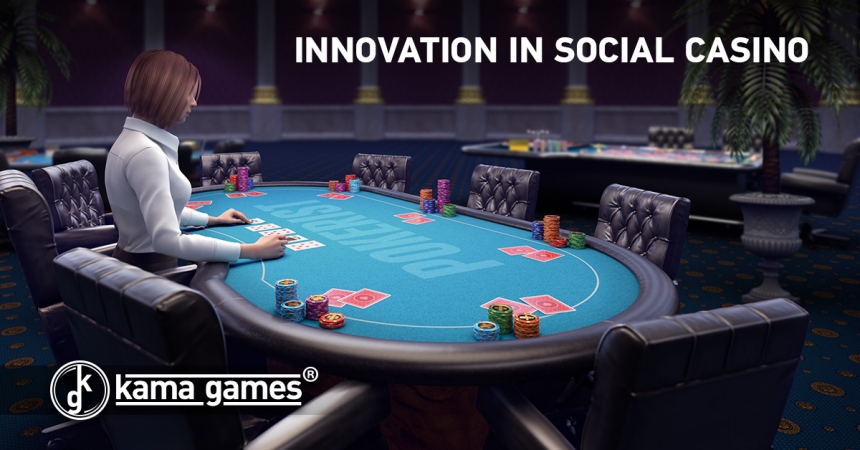
There’s a misconception when it comes to social casino games. Some believe that they don’t face the same pressures to improve and change as other games do. For example, AAA games face pressure to create more intricate and (often) realistic graphics as their competitors. Social casino games also don’t have to adapt to hardware evolutions as much as console and PC games do.
This, however, doesn’t take into account the subtle and not-so subtle changes taking place across the games world, and especially in the realms of social casino gaming.
Here are just some ways the genre has been advancing and adapting to changes in recent years…
Richer Strategy
“Metagaming” is an expression that might be familiar to some core gamers. It refers to strategies and playing styles beyond the established rules of a game. This takes place in complex RPGs, open world arena games and MMOs as well as in social casino games.
An example of metagaming would be analyzing the behavior of other players and anticipating how they will play - the infinitely variable “human element”!
Improved communications and games mechanics in social games is bringing metagaming more to the forefront.
Players of social casino games are communicating more, returning to take on old opponents, forging friendships and using additional in-game communications features to augment their playing and communication style. In many social casino games, a player might send virtual gifts, animated emojis, and even communicate how they time their plays (their checks, raises and folds, for instance). Pokerist even allows for text and voice messages.
All of these factors have helped to make both communications and gameplay more complex. With greater communication and depth of play, participants can collaborate, game-play can be analysed and a digital “bluff” can be just as effective as one in real life!
As player bases grow across the world and become more diverse, and as social casino games become more sophisticated, these metagaming factors will only increase.
Augmented Reality and Virtual Reality
Both literally and figuratively, AR and VR are changing how we look at games. Their arrival is arguably as significant as the motion controller breakthrough at the beginning of the century (a tech that helped the Nintendo Wii conquer its competition), and, just like the Wii, AR already has a breakthrough, mainstream success – Pokemon Go.
Recode reported that “Worldwide revenues for the augmented reality and virtual reality market were projected to approach $14 billion in 2017, according to IDC, the market research firm. But that’s forecast to explode to $143 billion by 2020.”
Investment in the field is soaring with $2.3bn invested in VR in 2016 and Facebook alone investing in 11 AR and VR companies.
Sam Forrest, KamaGames’ Director of Communications and Content, says that it’s still to be proven how these technologies will impact social casino games: “The industry is certainly confident in the future of both AR and VR, judging by its spend and projects in development. However, that potential has yet to be fully realised.”
“At KamaGames, we are always looking for ways to improve the UX and to capitalise in exciting emerging technologies. Some of these platforms are at very early stages of development, but we are dedicated to exploring their possibilities and remaining ahead of the game.”
Streaming
If you’re a fan of videogame live-streaming, you’re not alone: An average of 622,000 viewers are watching live streaming on Twitch at any given time. Twitch has viewership figures that TV networks crave: It boasts over 100million unique monthly users and almost half of those spend nearly 20 hours a week watching it. With that in mind, the reported US$970million purchase by Amazon makes a lot of sense.
Live streaming, an element of eSports, is a perfect fit for social casino games. After all, poker as a spectator sport was already popular before the videogame live-streaming boom.
KamaGames have plans for this sphere, with an exciting partnership in development which we’ll be announcing soon.
Graphics
Just like other genres, social casino games have evolved nicely on the graphics front. The improved horsepower and graphics of the average mobile device has played a part, but the enhanced appearance is also due to innovation, trial and error and ambition from developers.
3D graphics and third-person perspective are common in social casino games, a genre often perceived as 2D and top-down in appearance. Menus too, are becoming more attractive, clear and user-friendly.
Avatars are also improving, as they become customisable, elaborate and sophisticated with even the backgrounds getting more and more diverse and inventive.
Platforms
Social casino games first took hold in social media and were played on platforms like Facebook on desktops. The rise of mobile saw the games largely migrate to that platform, but now they’re also enjoyed on Smart TVs and our games are also available via HTML5.
With these platforms (and our long-running Facebook presence) people are finding new ways to discover and share social casino games. Naturally, these are fully optimized for mobile devices as we continue to see mobile steadily overtaking desktop in the social space.
Growing Social Layers
Communication between social casino players has undeniably improved in recent years via virtual “gifts”, animated emojis, chat facilities and more. Social media integration and communication are becoming more user-friendly with developers constantly adding more layers to further improve the social elements as well as make the whole gaming experience richer and deeper.
Mobile has become the dominant gaming platform in recent years, and has made huge leaps in capabilities and possibilities. The linking of social networks, diversity in payment methods (which especially varies from region to region) and improved ease of use have all made a mark. The result is more players worldwide and a broadening demographic.
Based on our own experience in game development, it’s clear that the user experience plays the biggest part of all in our games’ evolution. Regardless of how sophisticated the game or platform is, the user experience will always be paramount.
